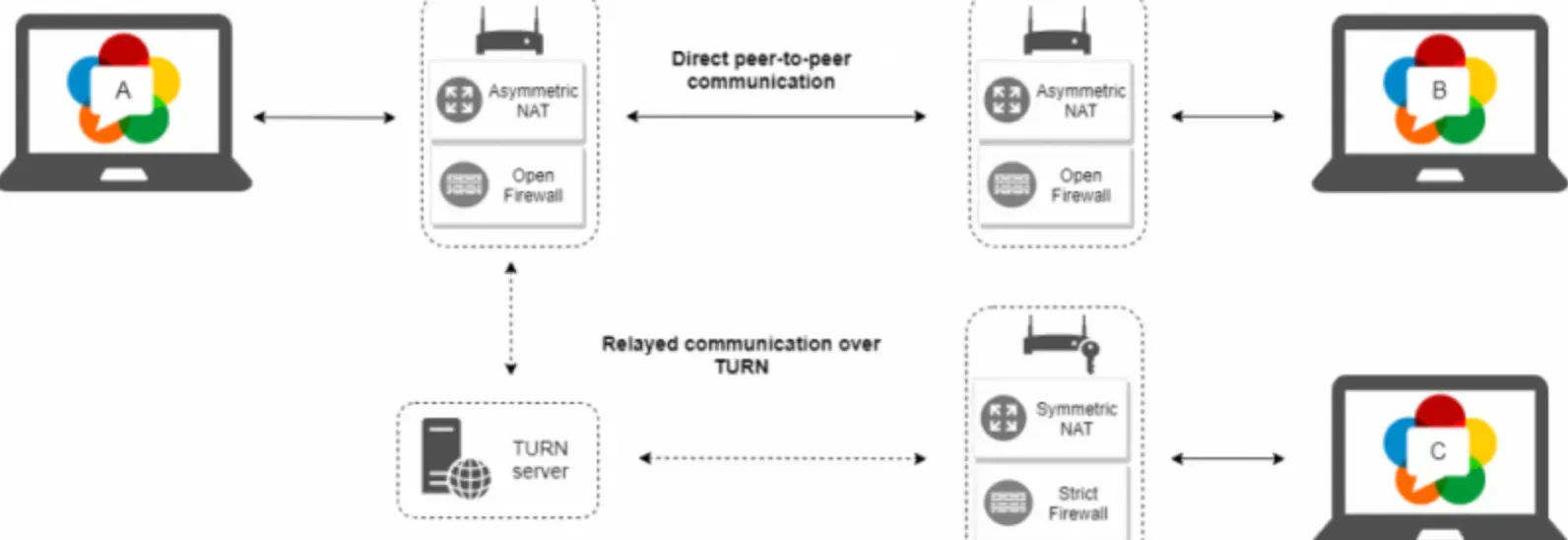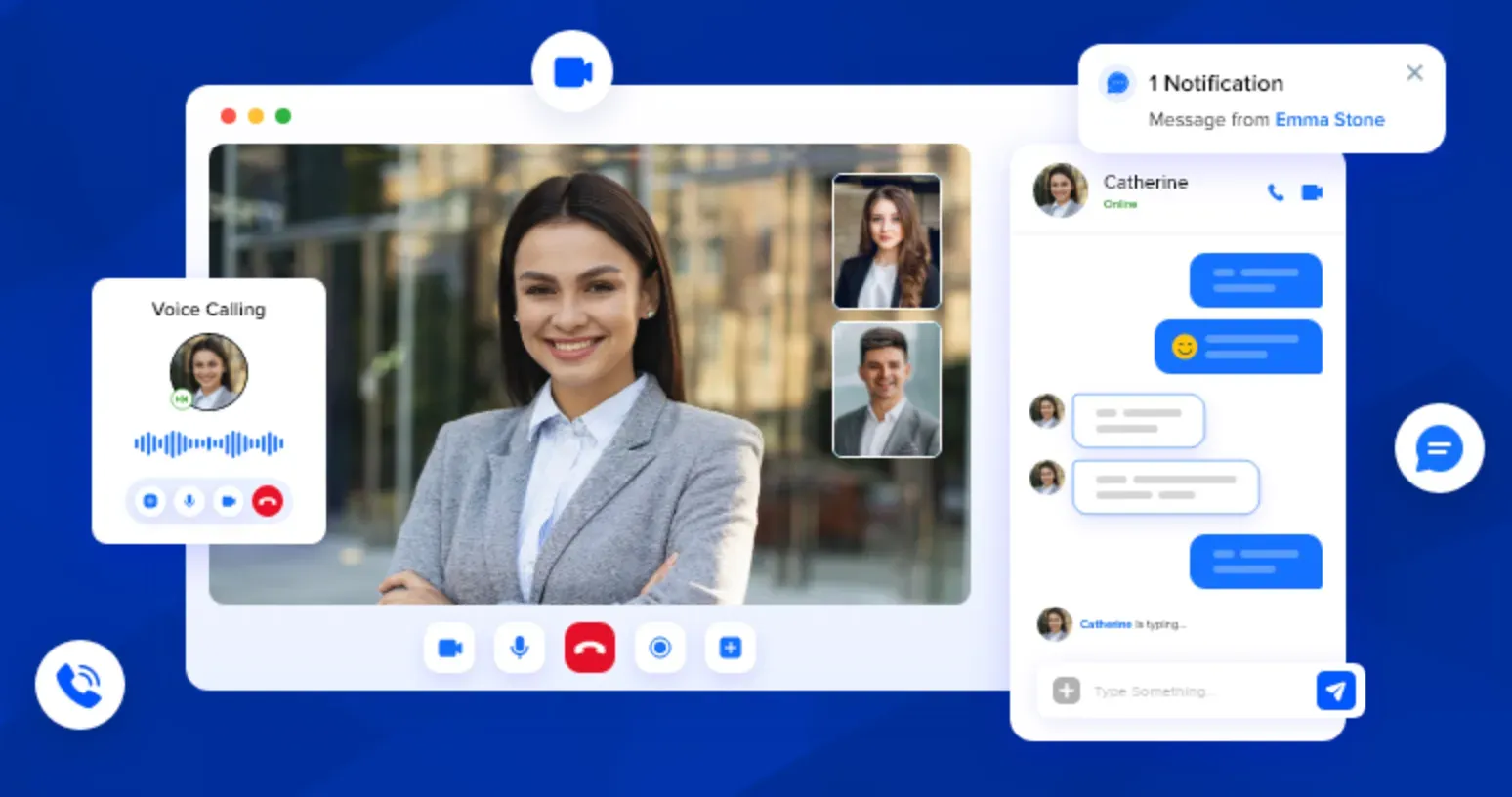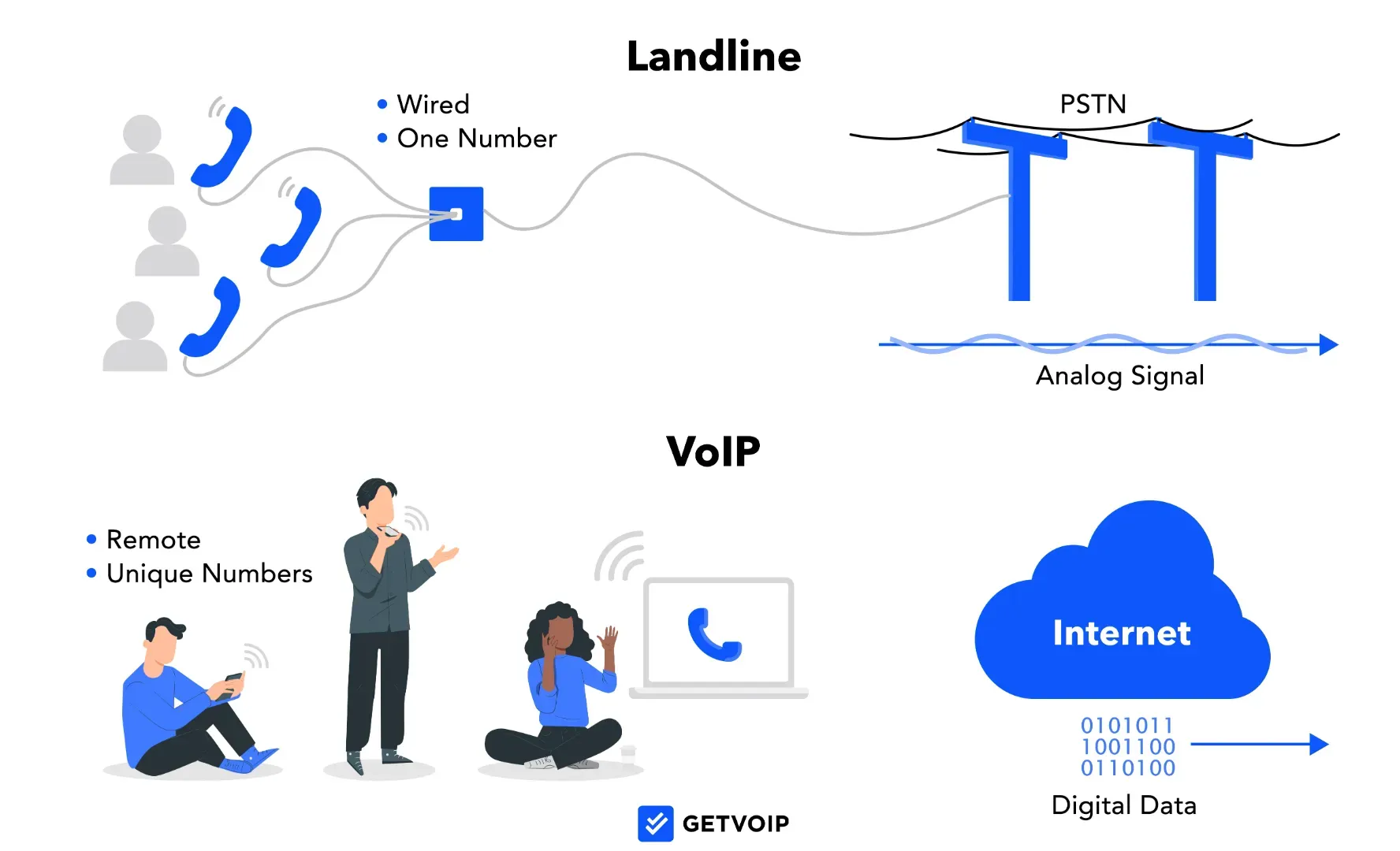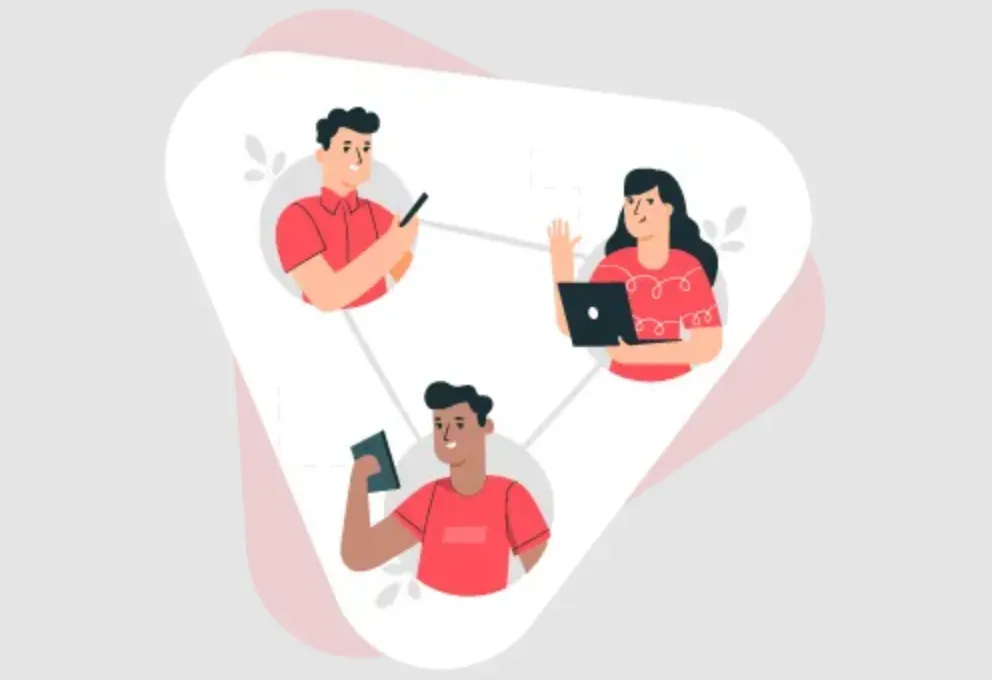What is Real-Time Communication?
Real-time communication refers to the instant exchange of information, allowing individuals or groups to connect through voice, video, or text messaging with minimal delay.
It's the digital realm's answer to real-life interactions, fostering personal and professional connections in the blink of an eye.
Who Utilizes Real-Time Communication?
From casual users to business professionals, real-time communication is a tool that unites people across all walks of life.
Friends catching up, colleagues collaborating, or customers seeking assistance—it's all happening in real-time, bringing people together despite geographical barriers.
Where is Real-Time Communication Applicable?

Real-time communication is all around us—in messaging apps, online learning platforms, teleconferences, and even customer support centers.
It's breaking down barriers, making it a breeze to connect with anyone, anywhere—be it across the street or across the globe.
When is Real-Time Communication Most Effective?
There are instances where nothing beats the immediacy of real-time communication—it's indispensable when decisions need to be made quickly, when clarifying details, or when nurturing relationships. It's like having a face-to-face chat, just in the digital realm. The moment is now!
Why Embrace Real-Time Communication?
Why not? Real-time communication is transforming the way we interact, empowering us to maintain seamless connections, exchange ideas, and foster relationships.
In this fast-paced world, it's a game-changing asset that deepens understanding, drives collaboration, and propels progress.
Importance of Real Time Communication

Real-time communication is vital in today's fast-paced world, and here's why:
Facilitating Immediate Action
Real-time communication allows for immediate responses, which can be critical when swift decisions or actions are necessary.
With the instant exchange of information, teams can reduce delays and ensure efficient operations.
Enhancing Collaboration and Productivity
Collaboration is often largely dependent on real-time communication.
Team members can bounce ideas off one another instantaneously, speeding up problem-solving and fostering creative thinking, thereby boosting overall productivity.
Strengthening Customer Relationships
To customers, the ability to communicate in real-time means getting queries or issues resolved quickly.
This immediate support strengthens customer relationships and enhances customer satisfaction, leading to better customer retention and increased loyalty.
Ensuring Transparency
Real-time communication promotes transparency within teams or between businesses and customers.
Everyone stays updated about progress, changes, or issues, ensuring that there are no unexpected surprises along the way.
Supporting Remote Operations
In the context of remote work or virtual teams, real-time communication becomes crucial.
It helps bridge geographical gaps, maintain project momentum, and foster a sense of unity among team members.
Key Features of Real Time Communication

Real-time communication is characterized by the following key features:
Instantaneous Interaction
A hallmark of real-time communication is its instantaneous nature.
Whether it's video calls, instant messaging, or live streaming, these services deliver lightning-fast, almost immediate transmission of information, enabling real-time interaction between people regardless of their geographical location.
Multiple Communication Modes
Real-time communication systems offer multiple communication modes—text, audio, and video.
Users can switch between these as per convenience, making the interaction dynamic and multidimensional. From brief text chats to detailed video meetings, the versatility is commendable.
User Presence Information
A significant feature of real-time communication is the presence of information.
This feature provides data about a user's availability, letting others know when it would be most appropriate to contact them. You might be familiar with "online," "offline," or "busy" indications on various platforms.
Synchronization across Devices
Real-time communication allows synchronization across multiple devices including smartphones, tablets, and computers.
So, regardless if you start a chat on your phone and then switch to your laptop, you won't miss any part of the conversation.
Data Security
Given the sensitive nature of many real-time exchanges, these systems usually have robust security protocols.
Encryption is often a key feature, ensuring that the communication remains private and only accessible to intended recipients.
Types of Real Time Communication
Real-time communication encompasses different forms of communication methods, including:
Voice over Landlines and Mobile Phones

Traditional phone calls over landlines or mobile networks are a common form of real-time communication.
Users can have instant voice conversations with one another, facilitating immediate information exchange.
VoIP (Voice over Internet Protocol)
VoIP allows communication using internet-based platforms, such as Skype or Zoom, to make calls.
It converts voice signals into digital data packets, allowing for real-time voice communication over the internet.
Instant Messaging Platforms

Real-time text-based communication platforms like WhatsApp, WeChat, and Facebook Messenger allow users to send and receive messages instantly.
These platforms often include features like read receipts and typing indicators for real-time interaction.
Video and Teleconferencing
Video and teleconferencing enable live, real-time communication through audio and video channels.
Participants can see and hear each other, facilitating remote meetings, interviews, or collaborations.
Robotic Telepresence
Robotic telepresence involves the use of robots to enable real-time interaction and communication remotely.
By using robots equipped with cameras and microphones, individuals can virtually attend events or engage in conversations as if they were physically present.
Differences between Real Time Communication & Other Forms of Communication

Real-time communication sets itself apart from other forms of communication in the following ways:
Immediacy of Interaction
Where real-time communication (RTC) offers instantaneous interaction, other forms of communication might lack this promptness.
While RTC empowers live conversations via text, audio, or video, alternative communication methods like emails or letters involve inevitable delays.
Such time lag can slow down progress, especially in time-sensitive matters.
Synchronous vs Asynchronous
RTC refers to synchronous communication happening live and requiring all parties to take part simultaneously.
Face-to-face conversations, phone calls, or video calls are instances of this. On the contrary, asynchronous communication, like emails or forums, can be engaged with at the receiver's convenience, losing the 'real-time' aspect.
Enhanced Engagement and Interactivity
Real-time communication avenues, such as video conferences or live chats, foster active engagement and interactivity.
They facilitate immediate feedback and adjustments. In contrast, not all forms of communication encourage such active participation.
Reading a report or a bulletin, for instance, is a one-sided interaction with a minimal response mechanism.
Richness of Communication
RTC platforms cater to a rich communication experience, offering text, voice, and video networking simultaneously.
This multi-modal approach to transmission bolsters clarity and effectiveness. Traditional communication forms, particularly those text-based like emails or letters, may not capture the same level of detail and expressiveness as RTC.
Context and Non-Verbal Communication
RTC excels in conveying context and non-verbal cues. Video calls or live streams allow the use of body language and expressions offering depth to messages.
On the contrary, other forms of communication, like text or voice messages, might lack this level of nuance, rendering communication prone to potential misunderstandings.
Real Time Communication Application For Businesses
Real-time communication plays a crucial role in various business applications.
Team Collaboration and Communication
Real-time communication applications like Slack or Microsoft Teams boost team collaboration.
Employees can engage in instant messaging, and voice or video calls, fostering seamless, effective communication across departments or geographical locations.
Customer Service Enhancement

Enabling live chat or video support on websites ensures immediate customer assistance, leading to increased customer satisfaction.
Real-time communication tools can significantly enhance the support experience by resolving customer issues promptly and efficiently.
Virtual Meetings and Conferences
Real-time communication apps like Zoom or Google Meet allow businesses to hold virtual meetings and conferences.
This eliminates the constraints of geographical locations and keeps everyone, from stakeholders to employees, in sync without physical presence limitations.
Live Webinars and Training

Tools supporting RTC allow businesses to host live webinars or training sessions, which boost engagement rates.
Real-time Q&As during these live streams offer interactive learning experiences, often resulting in better retention and understanding.
Remote Work Enablement
Real-time communication technologies facilitate a robust remote work infrastructure.
With instant messaging, video conferencing, and document collaboration platforms, teams can function effectively despite physical distances, mirroring a real-time office environment.
Frequently Asked Questions (FAQs)
What are the advantages of real-time communication?
Real-time communication allows for instant interaction, quick decision-making, improved collaboration, remote work flexibility, and efficient customer service.
Which technologies enable real-time communication?
Technologies like voice over landlines, mobile phones, VoIP, instant messaging platforms, video and teleconferencing, and robotic telepresence facilitate real-time communication.
How does real-time communication benefit remote teams?
Real-time communication tools bridge the gap between remote team members, fostering collaboration, coordination, and effective communication for seamless workflow.
Can real-time communication replace face-to-face interactions?
Though real-time communication offers convenience and efficiency, face-to-face interactions still hold value in building rapport, non-verbal cues, and nuanced communication.
Is real-time communication secure and reliable?
Real-time communication platforms prioritize security measures, like encryption, to ensure data integrity and user privacy, making them reliable for professional and personal use.

